
Clamshell packaging is a go-to choice in the food, retail, and consumer goods industries because it’s durable, secure, and shows off the product inside. But when it comes to labeling, clamshell packaging containers can be tricky.
Curved, flexible, and clear clamshell containers make it harder to get labels to stick properly, stay aligned, and keep products visible. If labels don’t adhere well or end up in the wrong spot, packaging can look messy and unprofessional, leading to wasted materials and a weaker shelf presence.
To get it right, you need the right mix of materials, techniques, and equipment. In this blog, we’ll break down the challenges of labeling clamshell packaging, share best practices for a clean, secure application, and show how the right labeling equipment can help simplify the process and boost efficiency.
The Biggest Challenges of Labeling Plastic Clamshell Package Containers
Unlike flat or rigid surfaces, plastic clamshell package containers are more difficult to label due to their unique structure and material composition. Their curved and flexible design can cause labels to wrinkle or peel if the wrong adhesive is used.
Clear clamshell containers present another challenge, as labels must be applied in a way that enhances product visibility rather than obstructing it. Additionally, smooth plastic surfaces can make it difficult for labels to adhere properly, especially if exposed to temperature changes, moisture, or frequent handling.
Without a proper labeling strategy, you may end up with misaligned labels, peeling edges, and wasted materials. To avoid these issues, manufacturers need to choose the right label materials, optimize label placement, and use specialized labeling equipment designed for non-flat surfaces.
Best Practices for a Flawless Label Application
To achieve a clean, professional look on clamshell packaging containers, you must carefully consider both materials and application techniques. Here are three essential areas to focus on:
Choose The Right Label for the Job
Labels need to hold up against handling, storage, and environmental conditions while staying securely in place. Pressure-sensitive labels are a great choice for plastic surfaces since they stick well without needing a ton of pressure.

If your products are stored in cold or humid environments, it’s important to use temperature-resistant adhesives that won’t peel or lose their grip over time. And if you want to keep your product fully visible while still including branding and compliance details, clear labels are a smart option—they let the packaging shine while ensuring key information is easy to read.
Apply Labels Without Hiding Your Product
Getting label placement right on plastic clamshell package containers is just as important as choosing the right material. A crooked or misaligned label can make your packaging look unprofessional and inconsistent, which can end up harming your brand. Using alignment guides and templates helps ensure every label is applied accurately and consistently.
It’s also worth thinking about label shape and size—you want a design that enhances branding without covering important product details. And if tamper-evident packaging is a priority, placing labels over the clamshell closure adds an extra layer of security while keeping the package looking polished.
Make Labeling Easier With the Right Equipment
Applying labels to curved and irregular surfaces by hand can lead to inconsistent results, wasted materials, and slower production speeds. That’s why automated labeling equipment can be a game changer.
Designed specifically for challenging surfaces, these labelers ensure precise placement, even pressure application, and faster throughput—all while reducing manual labor. Our PL Series offers reliable labeling solutions that adapt to various container shapes, keeping your packaging looking sharp and professional with minimal effort.
Say Goodbye to Labeling Errors With Pack Leader USA’s Equipment
For manufacturers looking to improve their clamshell labeling process, we offer reliable and efficient labeling solutions designed for plastic containers. The PL-221D and PL-211D are two ideal labelers for clamshell packaging, offering consistent label application, adjustable guides, and user-friendly controls.

- The PL-221D is a top and bottom labeling system that improves efficiency by having both labeling heads work simultaneously. This makes it perfect for times when you want to label both sides of your clamshell product in a single pass.
- The PL-211D, a top-labeling system, is designed for flat and slightly curved surfaces, providing the flexibility needed for different packaging styles.
By integrating these labelers into a production line, you can reduce manual labor, minimize labeling errors, and increase throughput. Adjustable settings allow for quick changes between different container sizes and label designs, ensuring versatility across multiple product lines.
6 Best Practices for Long-Lasting Label Performance
Even with top-notch labeling equipment and materials, getting the best results comes down to how you apply and maintain them. A label that peels, wrinkles, or fades doesn’t just look bad—it can hurt your brand’s reputation and even lead to compliance issues.
To keep labels looking sharp and securely in place, it’s important to prep the surface properly, test materials in real conditions, and keep your labeling equipment in top shape. A little extra effort upfront can save a lot of headaches down the line!
Here are some key steps to maximize label performance and longevity:
1. Prepare the Surface for Label Application
Before applying labels, it’s essential to clean the clamshell packaging container to remove any dust, oil, or moisture. Even a small amount of residue can weaken adhesion, causing labels to lift or peel over time. Using an alcohol-based cleaner or lint-free cloth can ensure surfaces are free of contaminants and ready for labeling.
2. Select Labels Designed for Your Packaging Environment
Not all labels are created equal. If products will be stored in cold, humid, or refrigerated conditions, labels must have moisture-resistant adhesives to prevent peeling. Similarly, for products exposed to heat or UV light, labels should be made with fade-resistant materials to maintain legibility and visual appeal.
3. Test Labels in Real-World Conditions

Labels should be tested under expected storage, transport, and handling conditions before full-scale production. This ensures that adhesives maintain their bond and that printed information remains intact. Businesses should assess:
- Adhesion strength over time
- Resistance to temperature fluctuations
- Durability against moisture, handling, and friction
4. Ensure Proper Label Application
Inconsistent label placement can lead to wrinkled or misaligned labels, reducing overall packaging quality. Labelers with adjustable pressure controls and precise alignment guides help ensure smooth, even application. Labels should also be placed in a way that enhances branding without hurting the product’s visibility.
5. Regularly Maintain Labeling Equipment
Just like any piece of industrial equipment, labelers require routine maintenance to function properly. Regularly inspecting rollers, applicator heads, and sensors ensures accurate performance and prevents costly downtime. Keeping equipment clean and calibrated improves precision, extends equipment lifespan, and minimizes operational disruptions.
6. Train Operators for Consistent Labeling Performance
Even with automated systems, operator training is key to ensure labels are applied consistently and minor issues are caught before they escalate. Employees should be familiar with:
- How to adjust label placement settings
- Routine cleaning and maintenance procedures
- Recognizing signs of poor adhesion or misalignment
Get Professional Results With Smarter Labeling Solutions
Labeling plastic clamshell package containers isn’t as simple as slapping on a sticker—it takes the right materials, proper placement, and specialized equipment to get it just right. When you’re intentional about fine-tuning your labeling process, you’ll see better efficiency, less waste, and a more polished brand presentation.
At Pack Leader USA, we design our labeling equipment for precision and reliability. They help manufacturers streamline operations and achieve consistent, professional results every time.
Need help finding the best labeling solution for your clamshell packaging? Reach out to our team today or download our Food Manufacturer’s Guide to Food and Beverage Labeling Equipment to learn more!
.webp?width=200&height=114&name=2x-Packleader-logo-large%20(1).webp)

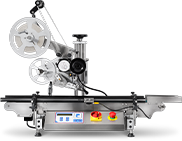
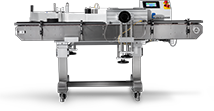
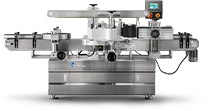
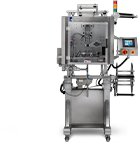
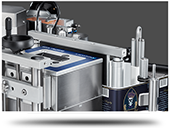
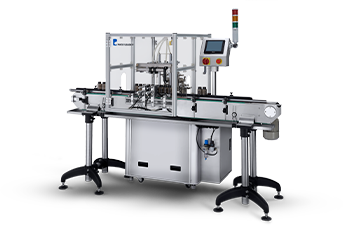
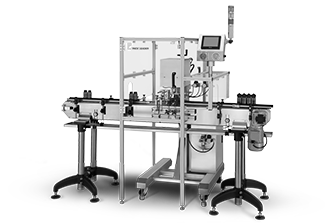
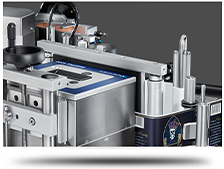





.webp?width=360&name=2x-color-logo%20(1).webp)